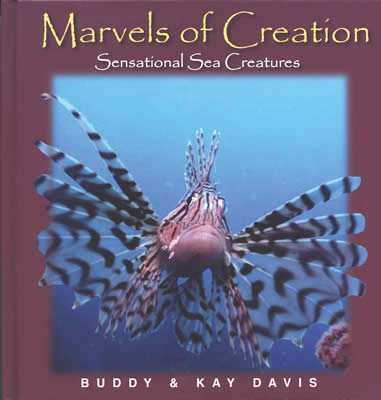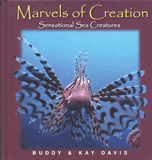One of the most interesting creatures God created is the octopus. There are over 150 species of octopuses and most prefer warm seas. A master of disguise, the octopus can change color and blend into its environment in seconds. To accomplish this outstanding feat, the octopus uses two kinds of chromatophores (pigment cells) that expand or contract. Under the pigment cells are small bodies called irdocytes that help reflect white light, or when refracted give off a green or blue color. The octopus also can disguise its shape somewhat by extending or tucking its long arms. Even its texture can be changed to help hide it.
The eight arms of the octopus are lined with suckers. It has a skin web that reaches from its body to the base of its arms. The octopus uses its parrot-like beak to crush its prey. The salivary glands contain venom that is injected into its victims. Its diet is made up of crabs, fish, and crustaceans. The octopus is famous for its well-designed eyes, which give the octopus 180 degrees of vision.
If frightened, the octopus can discharge a cloud of ink to hide itself and jet away from the intruder. Most octopuses make their home in shallow water and hide in rocks or a stone-made villa. When hunting, they creep around using their eight long arms. When the octopus swims, it is usually backward, its arms trailing like a streamer. When in a hurry, it forces water out of its siphon organs in a jet-like action.

The octopus has a large brain and has been studied on a number of occasions by scientists. There are reports of octopus attacks on humans. It is also reported that if a diver remains motionless, the octopus will let go. They seem to be more inquisitive than aggressive. They are very adaptable and in captivity quickly become used to people. However, this intelligent invertebrate is solitary and most would rather simply avoid man.
The female lays about 150,000 rice-size eggs in a period of a week. The females will brood the eggs for weeks. During this time, she won’t eat. When the young hatch, they are about 1/8 inch (.3 cm) long.
Octopus
Dibranchiata • Octopodidae
Octopus vulgaris
Length: 2 inches to over 25 feet (5 cm–7.6 m)
Special Design Feature: The octopus is a master
of disguise. It can change color and become
almost invisible against its background.
Did You Know? The octopus can discharge a
cloud of ink to hide itself from predators. It then
jets away by forcing water through a tubular
organ in its mantle cavity.

Marvels of Creation: Sensational Sea Creatures
Brings the world of the sea alive in a unique and colorful way with photographs, a page of facts and commentaries.
Browse Kids BookRecommended Resources
- © 2024 Answers in Genesis
- Privacy Policy
- Contact
- About


